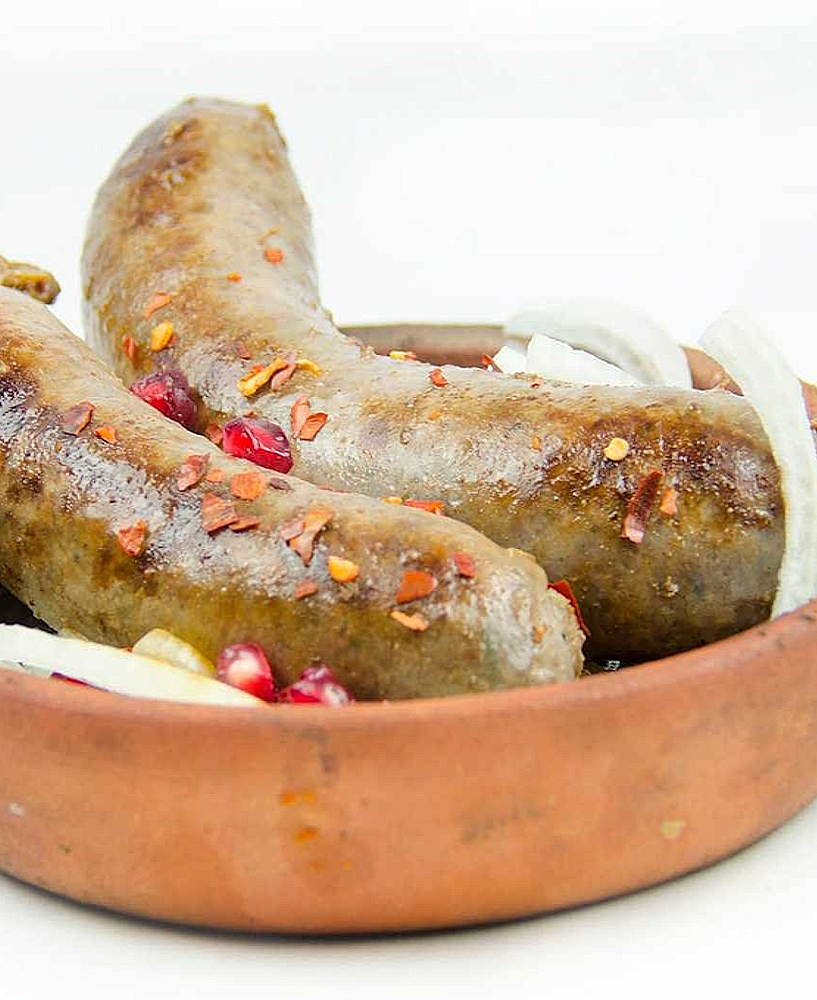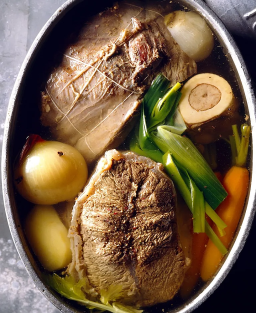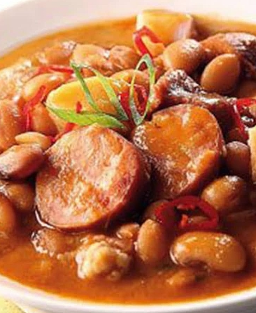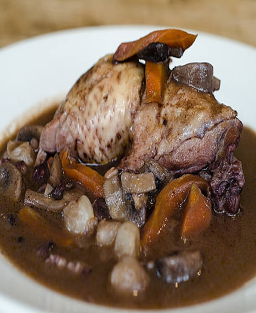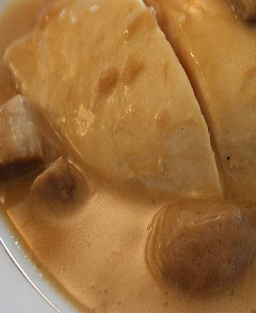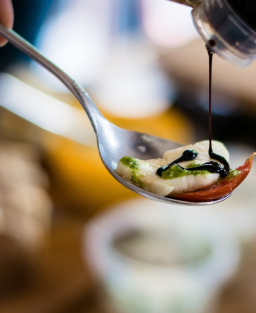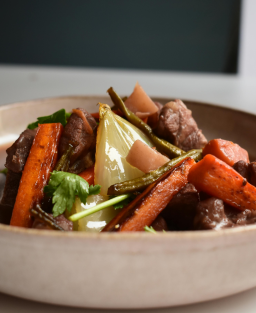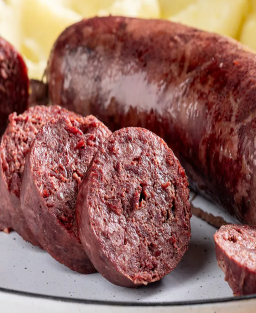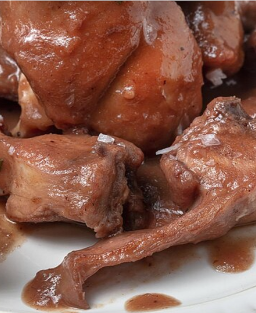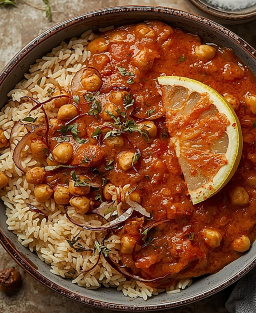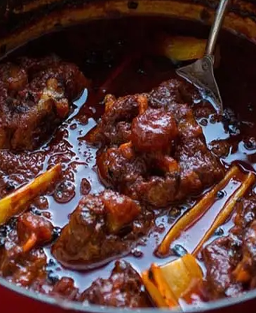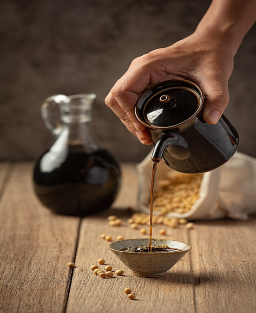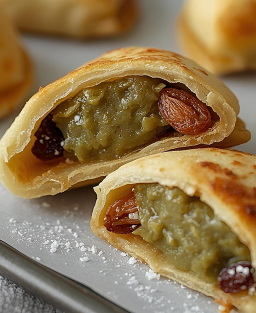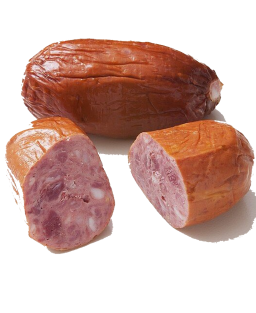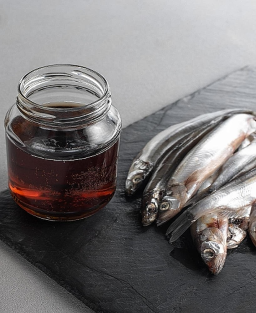Recipe Kupati ქუპათი – authentic Georgian sausage, traditional spiced recipe, prepared according to local craftsmanship
Recipe Kupati ქუპათი – authentic Georgian sausage, traditional spiced recipe, prepared according to local craftsmanship
ქუპათი – ტრადიციული გეორგიული სოსისი, სანელებლებით, ხელნაკეთი რეცეპტი ოჯახური მოხმარებისთვის
Oven Programming Table UNOX, Rational, Domestic
Country / Region
-
Country: Georgia
-
Region: Mingrelia (Samegrelo), Abkhazia, Imereti (Western Georgia)
1. Definition and place in Georgian cuisine
Kupati (კუპატი) is a traditional Georgian sausage, especially popular in the western part of the country (Mingrelia, Abkhazia, Imereti). It is usually made from pork, sometimes mixed with beef or veal, onion, and a spice blend including coriander, garlic, black pepper, and occasionally cinnamon or other local aromatics. It is often boiled first and then fried or grilled before serving. It is considered an emblematic dish of rural western Georgian cuisine, consumed as street food, festive dish, or winter family preparation.
2. History
Kupati originates from western Georgia, particularly Mingrelia and Abkhazia. This sausage was intended for conservation and food self-sufficiency, allowing pork slaughtered in winter to provide protein throughout the cold season. Early versions had a high proportion of offal and fatty cuts, for yield and preservation purposes. Over time, the recipe was “refined”: more noble cuts (shoulder, belly), fewer offal, standardized spices like ground coriander and paprika. In contemporary gastronomy, grilled kupati can be found in restaurants, as well as modernized variants, for example stuffed with Sulguni cheese for export or adapted to international markets.
3. Typical ingredients and indicative proportions
(Frequent family and regional variations; below is a common base)
-
Meat: 70–80% minced pork (shoulder, belly, stomach), ± 20–30% optional beef or veal
-
Fat: finely chopped lard or belly (essential for juiciness)
-
Onion: 1 medium onion per 1 kg meat (finely chopped)
-
Spices: ground coriander (1 tsp/kg), garlic (2 cloves), black pepper, salt; optional: cinnamon, clove, or local spices such as barberry
-
Natural casings: carefully cleaned pork intestines used as casing
4. Preparation methods
-
Casing cleaning: rinse thoroughly with water, sometimes rub with cornmeal or vinegar to neutralize odors. Keep refrigerated until use.
-
Filling: homogeneous mix of minced meat, onion, salt, and spices. Traditional versions may include offal for more texture.
-
Stuffing: fill casings in long sausages or spirals according to local tradition, then tie.
-
Cooking:
-
Rural tradition: poach or gently cook to ensure internal cooking, then brown in a pan or over fire
-
Modern version: grill directly on charcoal or pan for smoky flavor and crispy skin
-
5. Regional variants and names
-
Mingrelia (Samegrelo): spicy seasoning, often served with ajika; sometimes with pomegranate juice or raw onion
-
Abkhazia: different spices and textures, local influence
-
Imereti, Guria, Adjara: variations in fat content and optional addition of veal; each region claims kupati as an identity specialty
6. Accompaniments and serving
Usually served with:
-
Thinly sliced onion (sometimes marinated), fresh coriander, pomegranate seeds
-
Ajika or chili to enhance flavor
-
Georgian bread (puri), pickled vegetables or fermented cabbage
-
In some restaurants, served on red bean purée (lobio)
7. Culture and reputation
Kupati is frequently mentioned in presentations of Georgian cuisine and international rankings, even among the “50 best sausages in the world.” It represents both family conviviality and exportable culinary craftsmanship.
8. Practical and sanitary notes
-
Food safety:
-
Natural casings: rigorous cleaning and refrigeration
-
Meat and filling: keep ≤ 4 °C until cooking
-
Cooking: internal temperature ≥ 71 °C (FAO/WHO)
-
Consume soon after cooking to avoid microbial risk
-
-
Modern adaptations:
-
Lighter versions (less fat, lean meat)
-
Premium recipes (kupati with Sulguni cheese, no offal, for export and high-end gastronomy)
-
-
Emblematic recipe by three chefs:
-
Tekuna Gachechiladze (Tbilisi) — gastronomic version: onion reduction, gentle cooking + final grill, modern presentation
-
Guram Baghdoshvili (Shavi Lomi, Tbilisi) — traditional Mingrelian version: adds ajika, rustic serving, respects local spices
-
Meriko Gubeladze (Café Littera, Tbilisi) — finished with fresh herbs, local cheeses for contrast
-
Legend or anecdote
In some Mingrelian families, crushed pomegranate seeds were added to the filling during winter celebrations to “bring wealth and health,” origin of modern use as garnish.
Recipe description
-
Artisan stuffed sausage mainly made from pork (shoulder + belly), onion, garlic, and spice blend (coriander, paprika, pepper). Meaty texture, spiced aroma, slightly sweet if cinnamon included. Poached then grilled for crispy skin and juicy interior. Serve with ajika, tkemali, raw onion, and coriander.
Ingredients
| Ingredient | Quantity | Approx. Weight (g) |
|---|---|---|
| Pork shoulder (boneless) | 70% | 700 g |
| Belly / lard | 20% | 200 g |
| Beef or veal (optional) | 10% | 100 g |
| Onion (very finely chopped) | 1 piece / 10% | 100 g |
| Fresh garlic (crushed) | 2–3 cloves | 10 g |
| Fine salt | 16 g/kg (1.6%) | 16 g |
| Ground coriander | 5 g | 5 g |
| Ground black pepper | 2 g | 2 g |
| Sweet (or smoked) paprika | 3 g | 3 g |
| Ground cinnamon (optional) | 0.5 g | 0.5 g |
| Dried marjoram (optional) | 1 g | 1 g |
| Natural pork casings (caliber 32–36 mm) | ~1.2–1.5 m | — |
| Cold water or ice (if needed) | q.s. | 0–30 g |
Note: Some ingredients may vary (adding offal — liver, heart — or replacing beef partially with pork; smoked or sweet paprika; ajika). Adjust salt 14–18 g/kg according to preservation and taste.
Detailed preparation
A. Reception and preparation of raw materials
-
Check meat ≤ +4 °C, appearance, lot numbers. Quarantine if doubtful.
-
Prepare clean, cooled equipment (stainless bowls, mincer, stuffer, cutting boards). Chill removable mincer parts 15–30 min in freezer.
B. Cutting
-
Debone if needed; remove excess skin/silverskin
-
Keep 25–30% fat for juiciness
-
Cut meat and fat into 2–3 cm cubes; offal 4–6 mm
C. Critical chilling
Keep all pieces and work area ≤ +6 °C; ideal: filling < +10 °C
D. Mincing
-
Mince meat with 8 mm plate, fat with 6 mm
-
Offal 4–6 mm separately
-
Filling temperature ≤ +12 °C; use ice or refrigerant blocks
E. Seasoning and mixing
-
Add salt (16 g/kg), knead 2 min
-
Add spices, garlic, finely chopped onion
-
Mix 3–5 min until homogeneous, slightly sticky
-
Test: form small patty, cook quickly, adjust seasoning
F. Maturation (optional)
Cover and refrigerate +2/+4 °C 8–24 h (12 h recommended)
G. Casing preparation
-
Soak 30–60 min if salted
-
Rinse, rub with coarse salt or cornmeal, rinse again
-
Keep in light brine ≤ +4 °C until use
H. Stuffing
-
Set up stuffer, 32–36 mm nozzle, lightly grease
-
Fill carefully, leaving space for twisting
-
Portion 12–18 cm, twist or tie
-
Prick air bubbles with sterile needle
-
Rest 30–60 min cold for casing to “settle”
I. Drying / Smoking (optional)
-
Light drying 1–4 h at 8–12 °C
-
Cold smoking 1–3 h with beech or hazel wood
J. Cooking / Finishing
-
Poach 75–80 °C until internal 72 °C, then brown 200–220 °C 2–6 min
-
Direct grill: medium-low heat until 72 °C internal, then brown
-
Simmer in sauce 20–30 min optional
-
Record critical temperatures
K. Cooling and packaging
-
Rapidly cool < +4 °C < 120 min
-
Vacuum pack or wrap; label with lot/date
-
Shelf life: fresh ≤ 24–48 h, cooked ≤ 7–10 days vacuum, frozen -18 °C ≤ 6 months
L. Meat and ingredient cuts
-
Meat: 2–3 cm cubes, fat smaller, offal 4–6 mm
-
Onion: finely chopped
-
Garlic: crushed or pressed
M. Charcuterie / Aging
-
Kupati is a fresh sausage; semi-dried versions require controlled fermentation, pH < 5.3, drying (microbial protocol needed)
-
Smoking: cold short 1–3 h
N. Cooked dishes: oven programming
-
UNOX / RATIONAL / domestic ovens, poach + finish methods (see table below)
Cooking table (example)
| Equipment | UNOX (CHEFTOP / BAKERLUX) | RATIONAL (iCombi Pro) | Standard Oven |
|---|---|---|---|
| Program | POACH & CRISP Kupati | GentlePoach → GrillFinish | Poach water → Grill |
| Type | Multi-step (steam → hot air) | Multi-step (controlled steam → dry heat) | Manual |
| Temp | 75 °C → 200–220 °C | 75 °C → 200 °C | 75–80 °C → 200–220 °C |
| Internal probe | Mandatory 72 °C | Mandatory 72 °C | Recommended |
| Rest | 5–10 min | 5–10 min | 5–10 min |
Adjust timing for sausage diameter, always verify internal temperature
Tips and advice
-
Keep filling cold ≤ +10 °C
-
Test seasoning with small patty
-
Don’t overload stuffer
-
Avoid overfilling casings
-
Reduce fat for leaner version (less juiciness)
-
EU export: labeling, traceability, HACCP compliance
-
Salt 14–18 g/kg, 16 g/kg recommended
Service
-
Serve 2–3 kupati per plate/board, cut diagonally
-
Garnish: finely sliced red onion, fresh coriander, pomegranate seeds
-
Accompaniments: ajika, tkemali, puri, mchadi, pickled vegetables, simple cucumber/tomato salad
Recommended wines and drinks
-
Red wine: Saperavi or fruity, tannic red
-
White wine oxidized / qvevri: Rkatsiteli
-
Beer: light lager or blonde top-fermented
-
Non-alcoholic: light lemon-pomegranate lemonade, spiced black tea







